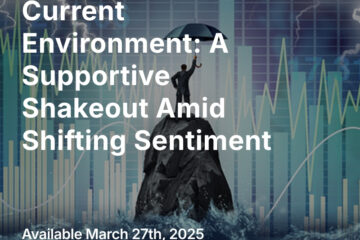Vladimir Putin pulled the trigger and has begun an apparently full-scale attempt to occupy Ukraine — or at least enough of it to create a permanent instability that will forestall its accession to NATO. We have long identified this issue as the lynchpin of Russia’s policy in its “near abroad.” Markets are reacting in a predictable way, considering Russia’s geostrategic significance in hydrocarbons and many important minerals. The prospect of a large-scale European land war is an uncomfortable one and adds a new twist to the evolving macroeconomic landscape. Allianz analyst Mohamed El Erian has referred to the possibility of a “stagflationary shock” arising from this eventuality. Time will tell how the markets, and critically the Fed, respond.
We believe that markets — whether cynically or realistically, the reader may judge — have already concluded that Ukraine belongs to Russia. The question is how long hostilities last, whether other actors become engaged, and how disruptive the sanctions are. While these uncertainties remain, and they may remain for some time, many market participants will be on tenterhooks.
The broad U.S. market is now down about 12% from its early December highs, and the NASDAQ is near or in bear-market territory. There are, as always, many reasons to be bearish. A reason to be bullish: the first seven weeks of the year saw investors pull $160 billion from money-market funds and $17.5 billion from bond mutual funds and ETFs, funnelling $50 billion of that back into stocks.
To us, the message from this is not unrelated to TINA — the old trope of the bull market that “there is no alternative” to stocks.
On the edges, with investors believing that both stock and bond markets are highly valued, some will increase their allocations to commodities, and particularly to precious metals, as well as to digital assets. But most investors will likely see great pain ahead for bond portfolios, and conclude that most of their reallocation will have to go to stocks — where at least there is the possibility of growth.
That process will be automated in the case of the vast pool of assets held in “Target Date” retirement-fund ETFs, which will automatically rebalance into more stocks as interest rates rise and the value of bonds falls. These funds will also be mathematically regular and predictable buyers of the broad indexes every two weeks as automatic payroll contributions occur — in a strong employment market.
Price-insensitive passive flows and 401K allocation models do not care who controls Donetsk and Lugansk. And many non-machines (discretionary human investors, both individuals and institutions) have been sitting on cash, waiting to buy.
Ukraine
The news in Ukraine is sad, particularly for those Ukrainians with a genuine desire to integrate into liberal Europe. However, we believe that Russia’s determination to prevent Ukraine’s accession to NATO is an existential matter for Russia, even prescinding from speculation about any broader ambitions to reassemble the former Soviet Union. The markets have likely priced in local tensions, but have not priced in a wider conflict, particularly one in which NATO becomes directly involved. We also note that with an 18% debt-to-GDP ratio, stringently managed while much of the rest of the world splurged on covid-era fiscal and monetary excess, Russia has been preparing a financial fortress for this occasion for a long time. It is a despicable regime in many ways, but not a foolish one.
Crypto
This week, one brief observation about crypto. Previous crypto crashes (or crypto “winters,” as some call them) have seen an evaporation of mainstream and institutional interest in digital assets. Exactly the opposite seems to be happening now, with regulatory developments, technical developments, institutional adoption, and public interest all remaining at elevated levels. Perhaps it’s the specter of inflation, or the news of regulatory overreach by Canadian officials shutting down “Freedom Convoy” bank accounts, but the crypto message is continuing to resonate widely in spite of the HODLers’ portfolio pain.
As we said last week, we like innovation, visible growth, strong balance sheets, and inflation-defense assets, particularly some precious metals and miners; tech-adjacent commodities and commodity producers (such as lithium, as discussed above); and brands and companies with pricing power who can turn inflation into accelerating earnings. The market may be nearing a bottom in a few weeks or months, so we are also holding cash to be able to buy opportunistically. Consumer stocks do not look good, but some other sectors will be buys on dips as monetary and geopolitical tensions resolve.
Thanks for listening; we welcome your calls and questions.



